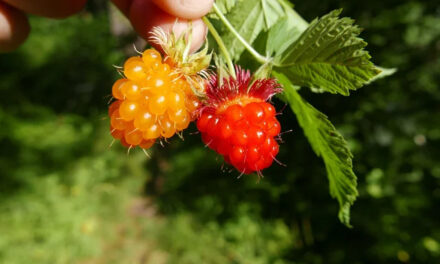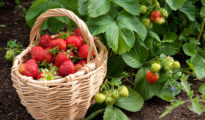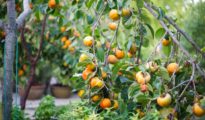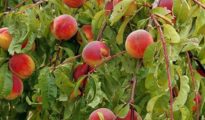Sick and tired of planting the same old fruit and veggies? Why not try something a little more exotic, such as a jujube tree? But what is a jujube tree and how to grow it? Not to be confused with jujube candies, the jujube tree, also known as Chinese dates, is a medium sized tree that produces oval shaped, single-stoned fruit which look like dates, but taste like apples! The color of the jujube fruit is a reddish brown hue, similar to that of dates. The tree can grow up to 40 feet tall and has glossy, green leaves with fruits that start off green, and, after left on the branch, will dry up and darken. Keep reading to find out how to grow jujube trees in your garden and enjoy its delicious fruit!
The History of the Jujube Tree
The jujube tree originated in China and has been cultivated there for over 4,000 years. There are over 400 jujube cultivars. Hundreds of years ago, the jujube seeds traveled to other continents, and eventually made their way to northern Africa, Russia, the Middle East, southern Europe, and the southwestern United States. If you're interested in growing jujube trees, you should know that these trees require sun and heat. Those that live in cold climates cannot grow jujube trees unless they're grown in a greenhouse. And, the hotter it is – the better! Jujube trees love the heat and sun, and they thrive in climates with hot summers and year round sun. But just because they love the heat, that doesn't mean they can't also withstand cold temperatures. Jujube trees can actually grow anywhere, and can withstand temperatures of about -28F, but they just won't produce the jujube fruit. For the tree to be able to produce fruit, they'll need a long, hot summer and at least 6-8 hours of direct sunlight per day.
How to Grow Jujube Trees in Your Garden
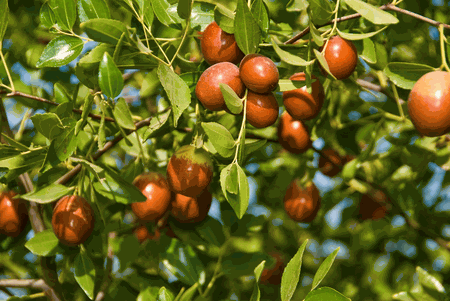
Planting Jujube Trees:
- These trees prefer warm and dry climates, but can tolerate temperatures as low as -28F! But remember, that although they can tolerate low temperatures, they may not be able to produce fruit.
- Make sure to use sandy, well drained soil and choose a sunny spot.
- The tree can be propagated by seed or root sprout.
- Plant the seed or the root sprout directly in the ground, and amend with sandy, well drained soil.
- Plant in an area that's protected from the wind, and be sure to choose a spot where your tree will get the most sunlight.
- Mulch around to keep moisture.
- Be sure to plant in a location will little wind and lots of sun.
Care:
- Apply a single application of nitrogen prior to the growing season to help with fruit production.
- Water regularly.
Harvesting Jujubes:
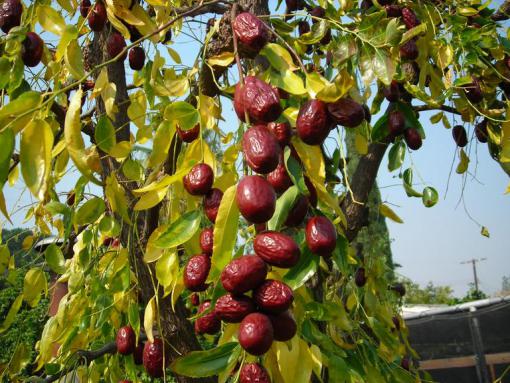
- Once the fruit has turned dark brown, it is ready to harvest!
- Alternatively, you can also leave the fruit on the tree until it has dried, so that is it more like a date. Dried jujubes are a delicious, healthy snack!
- Cut the stem when harvesting rather than pulling the fruit from the vine.
- Store the fruits between 11-13C in a green fruit bag.
- Do not pick fruits when they are green – they will not ripen.
How to Eat Jujube Fruits
There are lots of different ways you can enjoy this exotic fruit! Jujube fruits can be eaten raw, can be left on the tree to dry and then consumed, or can be made into jams, jellies, syrups, and much more! One of the most popular ways to enjoy jujube fruits, is to candy them!


